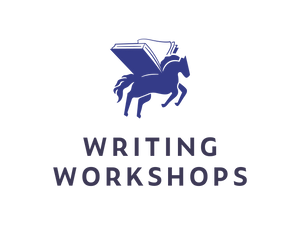by Writing Workshops Staff
2 years ago

In the vast landscape of literature, there exists a unique form of storytelling that captivates and challenges writers and readers alike—flash fiction and nonfiction. This compact and potent genre invites us to dive into the depths of storytelling with brevity as our guide (there is even an entire month devoted to writing flash fiction). So, let's embark on a brief journey through the craft of writing flash, exploring its intricacies and discovering the magic that lies within its concise embrace.
At its core, flash is a distilled narrative, a glimpse into a larger world encapsulated within a confined space (if you're writing flash nonfiction, it can sometimes be called Sudden Truths). It is a moment frozen in time, a burst of creative energy that captures the essence of storytelling in its purest form. Flash fiction, often ranging from a mere six words to around 1,000, requires a mastery of economy, a skillful selection of words that evoke emotions and ignite the imagination. The best flash fiction is filled with both depth and urgency.
To begin our exploration, let us delve into some essential techniques that can enhance the art of crafting flash fiction:
-
Start with a Spark: In flash fiction, every word matters. Begin with a compelling idea, a single image, or a thought-provoking question. This initial spark will ignite the creative process and set the tone for the entire piece. Choose wisely, for it will serve as the foundation of your narrative.
-
Embrace Constraints: The limited word count of flash fiction may seem daunting, but it is precisely within these constraints that creativity thrives. Embrace the challenge of crafting a complete story with a beginning, middle, and end within a confined space. Let the brevity push you to explore new avenues of expression and hone your ability to distill ideas to their essence.
-
Focus on Character: With limited space, it is crucial to develop a strong connection between the reader and your characters. Select one or two individuals to anchor your story, allowing the reader to invest in their experiences and emotions. Each word dedicated to character development carries weight and significance.
-
Show, Don't Tell: In flash fiction, the power of suggestion reigns supreme. Instead of explicitly stating every detail, employ vivid imagery and sensory language to paint a vivid picture in the reader's mind. Engage their senses, and let their imagination fill in the gaps, fostering a deeper connection to the story.
-
Craft an Impactful Ending: Endings are pivotal in flash fiction—they should linger, resonate, and leave a lasting impression. Surprise your readers with a twist, evoke a powerful emotion, or pose an open-ended question that invites contemplation. The final lines should reverberate within their minds long after the story concludes.
-
Edit with Precision: As with any form of writing, editing is crucial in flash fiction. Every word must earn its place, contributing to the overall impact of the piece. Trim unnecessary details, tighten sentences, and ensure each word carries significance. Strive for clarity and precision, creating an immersive experience within the limited space.
-
Embrace Experimentation: Flash fiction is a fertile ground for experimentation and innovation. Play with narrative structures, experiment with unconventional perspectives, and challenge traditional storytelling conventions. Push the boundaries of what can be achieved within a condensed narrative framework.
By embracing these techniques, you can unlock the true potential of flash fiction. It is a genre that demands intentionality, precision, and an unwavering commitment to storytelling in its purest form. Through the power of brevity, you have the ability to evoke emotions, spark the imagination, and transport readers to worlds far beyond the confines of the page.
It is essential to read widely within the genre. Immerse yourself in the works of accomplished flash fiction writers. Analyze their techniques, study their use of language, and explore how they construct impactful stories within limited space. By understanding the nuances and possibilities of flash fiction, you can refine your own craft and develop your unique voice.
In addition to honing your technical skills, cultivating a mindset of openness and curiosity is crucial. Inspiration can be found in the most unexpected places—an overheard conversation, a fleeting moment of observation, or an intriguing headline. Keep a notebook handy to capture these fragments of inspiration, for they may become the seeds of your next flash fiction masterpiece.
Remember, the power of flash fiction lies not only in its brevity but also in its ability to provoke thought and evoke emotions. Delve into themes that resonate with universal experiences—love, loss, longing, and human connection. By touching upon the core aspects of the human condition, your flash fiction can transcend its limited word count and leave a profound impact on readers.
A List of Flash Fiction Magazines
Here is a sampling of excellent literary journals and magazines that specifically publish flash fiction.
Many other publications also accept flash fiction, so it is worth researching to find the right fit for your work.
For starters, take a look at these:
Lastly, embrace the revision process. Craft your initial draft fearlessly, allowing ideas to flow freely. Then, step back and revise with a discerning eye. Trim extraneous words, sharpen imagery, and ensure coherence and clarity. Every edit brings you closer to the essence of your story, refining it to its most potent form.
Browse our upcoming flash workshops here.
